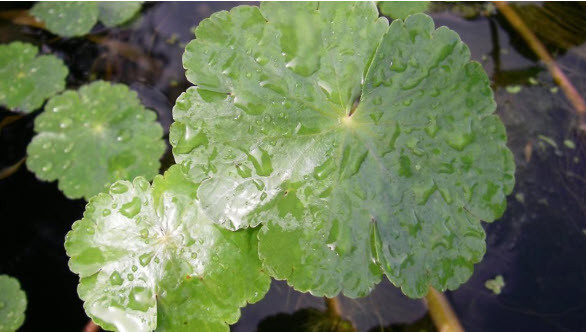Introduction: Floating Pennywort (Hydrocotyle ranunculoides) is an invasive aquatic plant that poses a significant threat to waterways across the UK, including the Norfolk Broads…
The Broads Authority has asked river users to be on the lookout after floating pennywort was found on the River Ant, between Tonnage Bridge and Wayford Bridge, near Smallburgh.
The authority raised the alarm about the non-native and invasive species initially in October 2020 and keeps repeating its warning.
Broads Authority ecologist, Jonathan Cook, said the pennywort could end up becoming a major hazard if it is not brought under control.
Mr Cook said: “The pennywort was first spotted in late summer on the North Walsham and Dilham Canal between Honing Lock and Tonnage bridge, but we are uncertain as to how it entered the navigation.
“There’s also a patch at the confluence with the Hundred stream towards East Ruston.
“It is likely to extend up the stream as well as the surrounding dykes and ditches.
“We are asking people in the area to help out by being on the lookout for the floating pennywort and if they spot it, to ensure that they do not disturb it.”
You can read all about it here:
What to do if You Find Pennywort
As a mooring owner, you have a responsibility (in your deeds) to keep your mooring free of weeds and debris. So rake it out, being careful not to break it into smaller pieces.
If you are a DBC paid member, contact us via the Contact Us page, and we will help you do it.
If you are renting the mooring, let the mooring owner know that there is a problem.
Here are some images of Pennywort that was discovered and removed from various moorings recently.
If you require any assistance with this article, please do not hesitate to Contact Us









